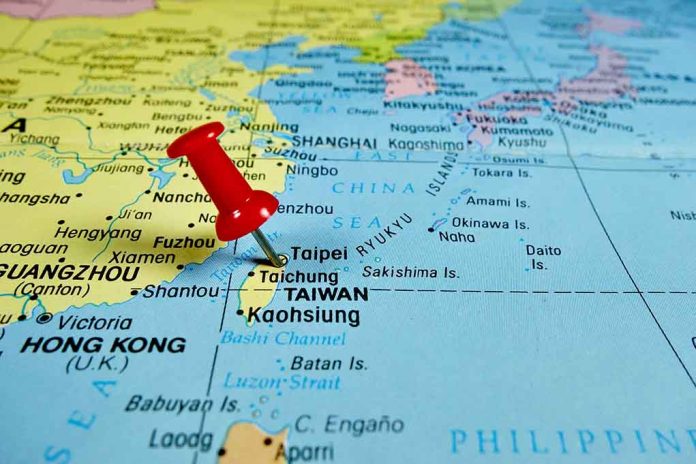
Taiwan’s $8.88 billion submarine project aims to bolster maritime defense against China’s growing threat.
At a Glance
- Taiwan plans to invest $8.75 billion to build seven advanced attack submarines
- New submarines will feature improved design based on the Hai Kun prototype
- Submarines will be equipped with enhanced combat systems and Harpoon missiles
- Project spans 15 years, with first submarine entering production in 2026
- Initiative aims to strengthen Taiwan’s maritime defense capabilities amid regional tensions
Taiwan’s Bold Move to Strengthen Naval Capabilities
Taiwan’s Ministry of Defense has unveiled an ambitious plan to invest 284 billion Taiwanese dollars (approximately $8.75 billion) in the construction of seven new attack submarines. This significant investment demonstrates Taiwan’s commitment to enhancing its maritime defense capabilities in the face of growing regional tensions, particularly with China.
The new submarines will be based on an improved design of the Hai Kun (Narwhal) prototype, Taiwan’s first domestically produced submarine. This initiative marks a crucial step towards Taiwan’s goal of achieving self-sufficiency in military technology and bolstering its naval forces.
How #Taiwan's new subs could complicate a #Chinese invasion
With the launch of its first home-built submarine prototype Thursday, Taiwan has not only showcased its growing defense-industrial prowess but also sent a warning to China that attempts to blockade or invade the… pic.twitter.com/cfjpQvgskM
— Indo-Pacific News – Geo-Politics & Defense (@IndoPac_Info) September 28, 2023
Advanced Features and Strategic Deployment
The planned submarines will incorporate state-of-the-art technology, featuring enhanced combat systems and the capability to fire both heavy torpedoes and Harpoon missiles. This represents a significant upgrade from Taiwan’s current Hai Kun submarine, which can only fire heavy torpedoes.
“The planned submarines will feature an improved design based on the Hai Kun, or Narwhal, prototype, Taiwan’s first domestically produced submarine, the Taipei Times reported, citing defense ministry sources.”
The submarines will be constructed in batches of three, two, and two until 2039, with an 18-month interval between each batch. The first submarine is scheduled to enter production in 2026, followed by the second in 2027. This phased approach allows for continuous improvement and adaptation to evolving security needs.
Boosting Deterrence and Regional Stability
Taiwan’s decision to invest in these advanced submarines comes amid rising tensions in the South China Sea and China’s increasingly aggressive posturing. The enhanced submarine fleet will serve as a powerful deterrent against potential Chinese aggression and contribute to regional stability.
“The construction of seven more submarines and the approval of the budget demonstrate the Lai government’s determination to safeguard Taiwan,” said Su Tzu-yun, a senior analyst at the Institute for National Defence and Security Research, a government think tank in Taipei.
The seven new submarines will significantly increase Taiwan’s naval firepower, carrying a total of 224 weapons. This represents a substantial upgrade from the 28 weapons carried by older Chien Lung-class submarines. The inclusion of Harpoon missiles, which were successfully tested by the Taiwanese Navy in 2014, further enhances the submarines’ offensive capabilities.
Challenges and International Context
While the submarine project demonstrates Taiwan’s resolve to defend itself, it also faces challenges. The higher cost per unit compared to the prototype submarine has raised some concerns. Additionally, the project’s success hinges on the successful completion of harbor and sea tests for the Narwhal prototype.
Taiwan’s submarine initiative aligns with broader regional trends of naval modernization, with China and Japan also enhancing their naval capabilities. The United States, which opposes any forceful attempt to take Taiwan, has committed to arming the island and may view this development as a positive step towards regional balance.
As Taiwan moves forward with this ambitious project, it reaffirms its position as a key player in the Asia-Pacific geopolitical landscape. The success of this initiative could significantly alter the balance of power in the region and provide Taiwan with a crucial defensive edge in the years to come.
















